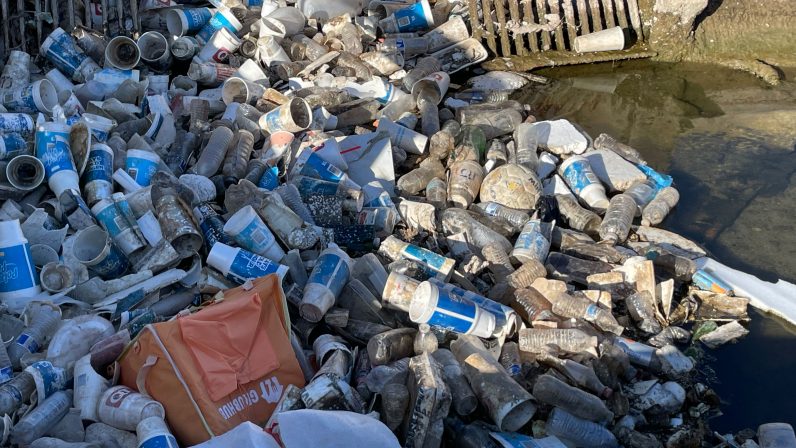Last weekend I was out for a walk along the canal by my house. I was appalled by the huge pile of trash accumulated near a barrier consisting of styrofoam Polar Pop cups, recyclable water bottles, a GrubHub cooler, and a soccer ball. I shared this with the 1st graders to remind them that climate change and pollution are not just issues in other parts of the world. They are in our own neighborhoods.
I haven’t written in awhile about the work we’ve been doing in our two elementary classes. The research and conversations continue, as we navigate our way through the effects of global warming and climate change. More specifically, we’re honing in on deforestation and ocean plastic pollution in both classes, with the addition of wildfires, drought, and the rising sea level in 2nd-4th. Children are working in small groups or pairs to research their topics. Some of their research is driven by their own questions, such as these generated by 1st graders:
- Why is plastic so popular with people and why do we use it so much?
- Why do people still buy plastic?
- Why is plastic good for humans but not sea animals?
- How does plastic get in the ocean?
- Why do people throw plastic in the ocean and rivers?
- How can plastic cause problems in the ocean?
- How does plastic get stuck to sea animals?
- Why do animals eat plastic in the ocean?
Their next work will be to answer their questions, and then come up with a way to teach what they’ve learned to the other group. Eventually, They’ll create an innovation project focusing on a solution to their climate change challenge.
The 2nd-4th graders are on track to finish up their partner research in the coming week and begin writing an individual document about their topic. Requirements for writing will vary based on skill and/or grade level. Partners will then collaborate on a project for a presentation they’ll make to classmates and, perhaps, parents.
Our study will culminate with a focus on solutions that reduce effects of climate change. I’ve been pleasantly surprised with some of the innovations I’ve discovered so far, including a recent story about Los Angeles becoming a “sponge city.” I believe that finding and sharing solutions with the kids is an important part of learning about climate change, especially at such a young age. Hopefully they’ll feel empowered to step up and make changes. As part of the empowerment discussion, we’ll be circling back to activism, which we started with, and include a conversation about climate justice. My intention is to leave students inspired to be problem solvers and hopeful advocates for a healthier Planet Earth.

